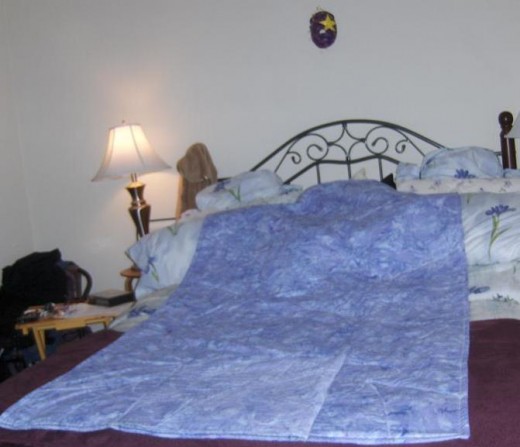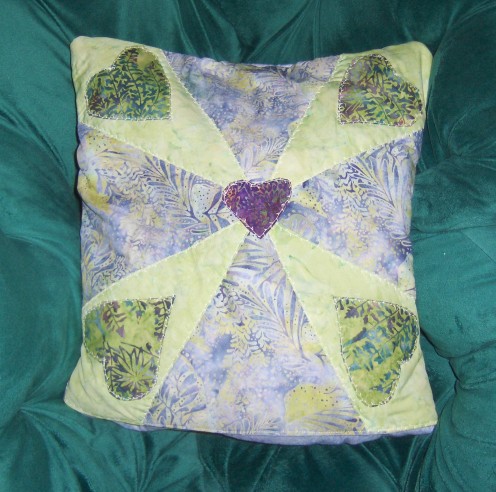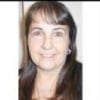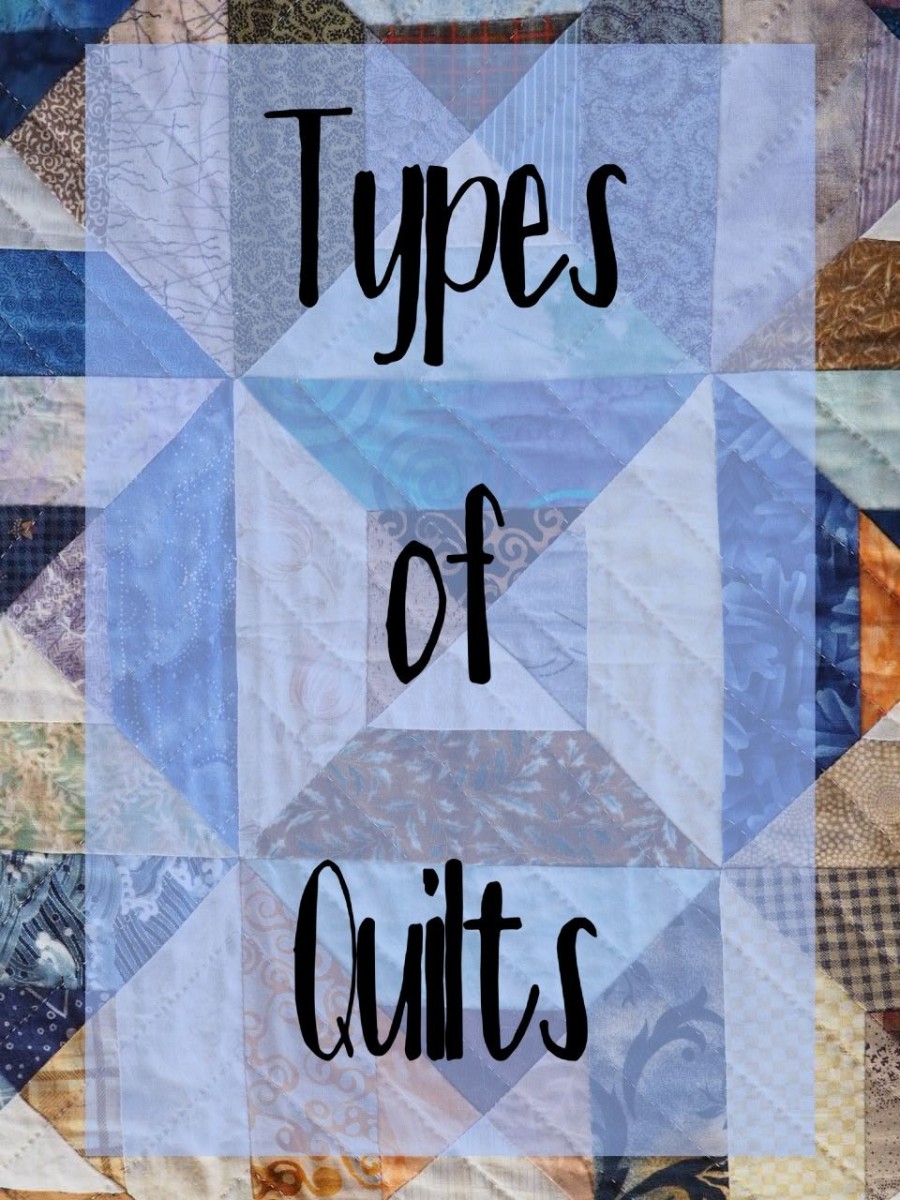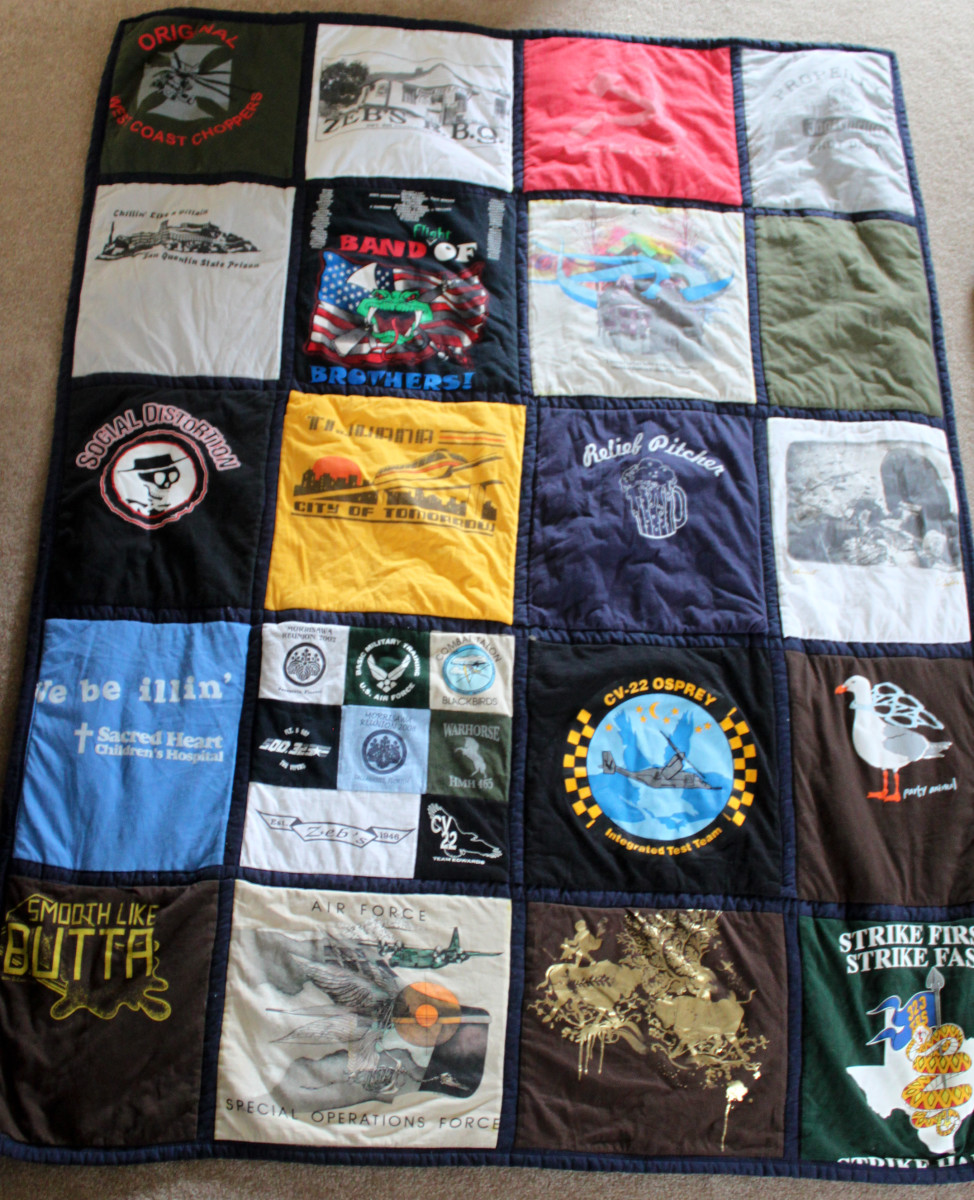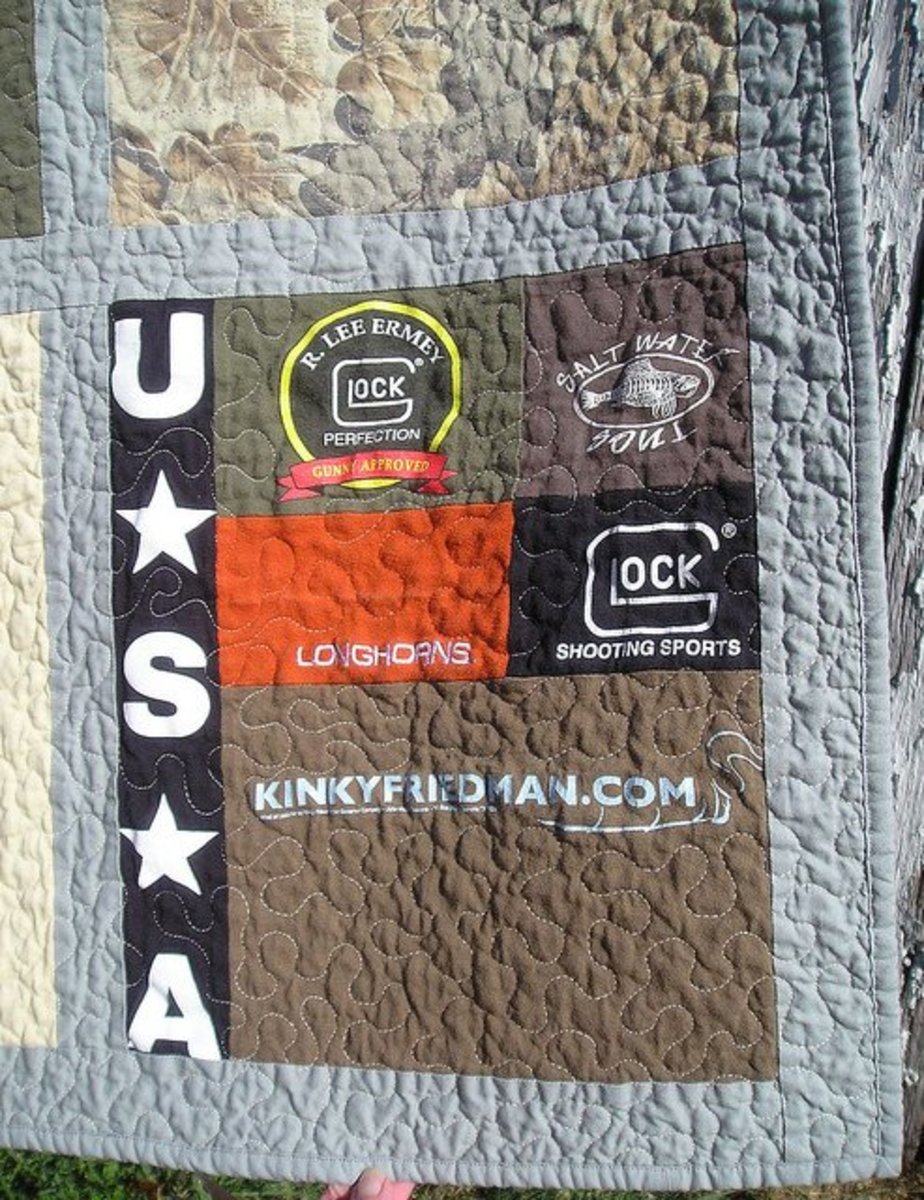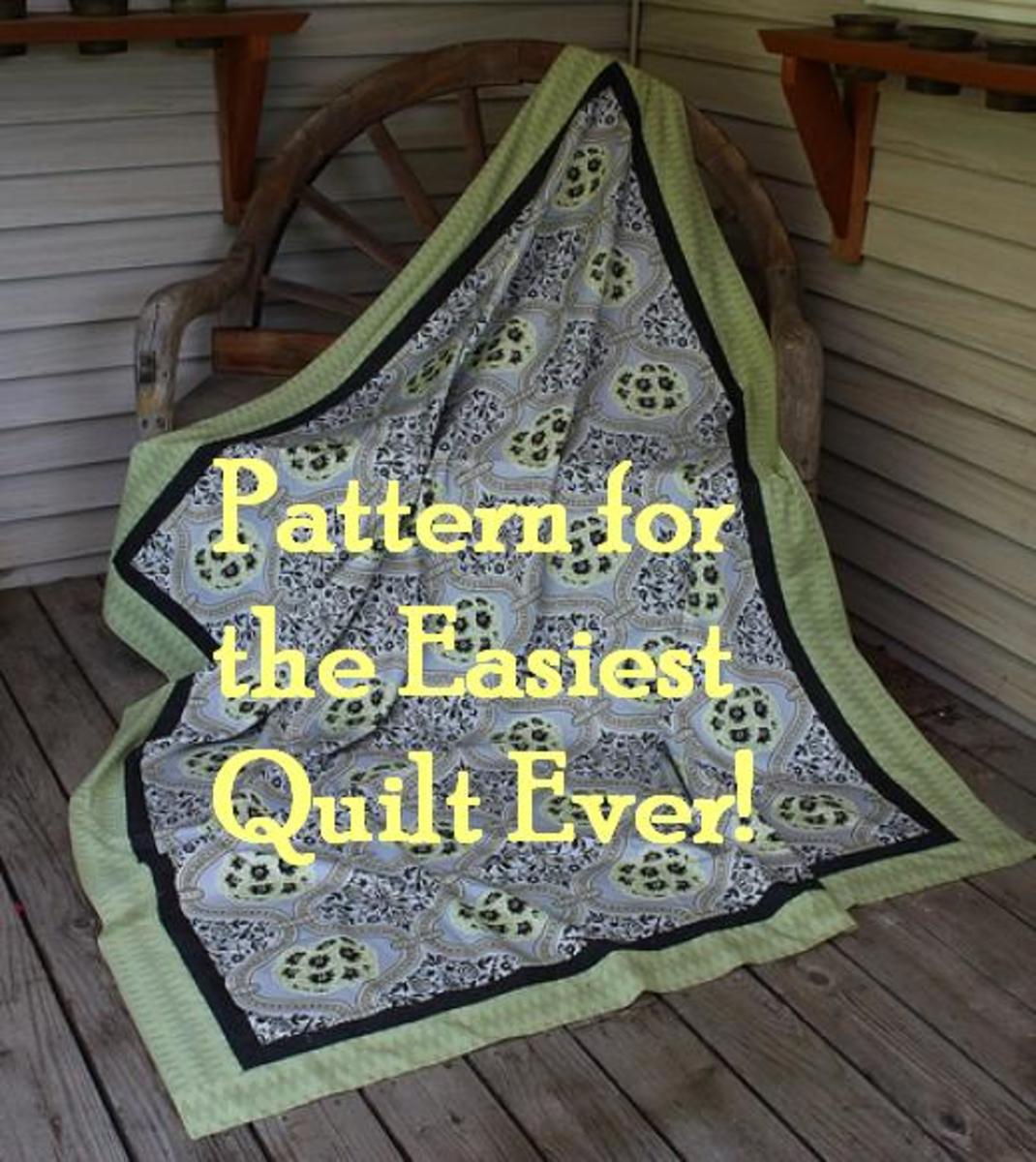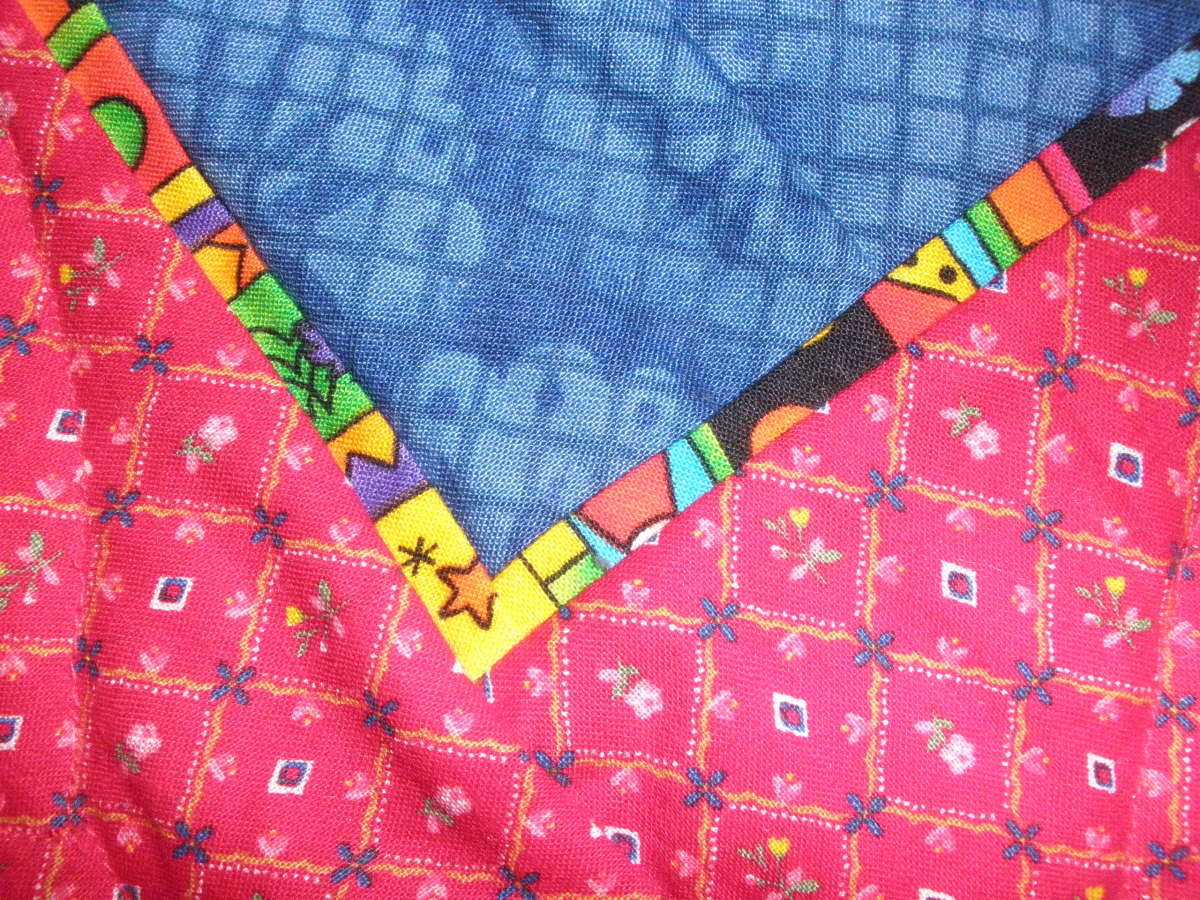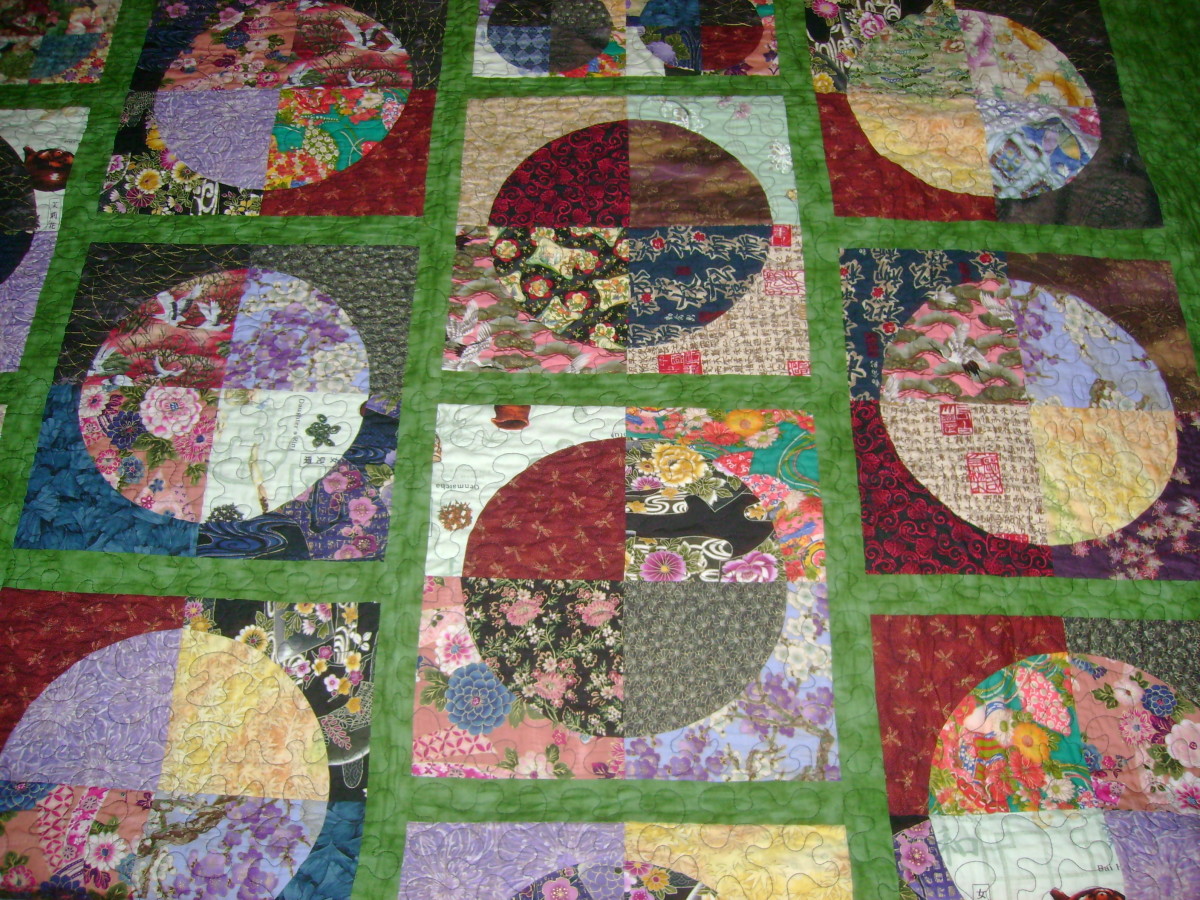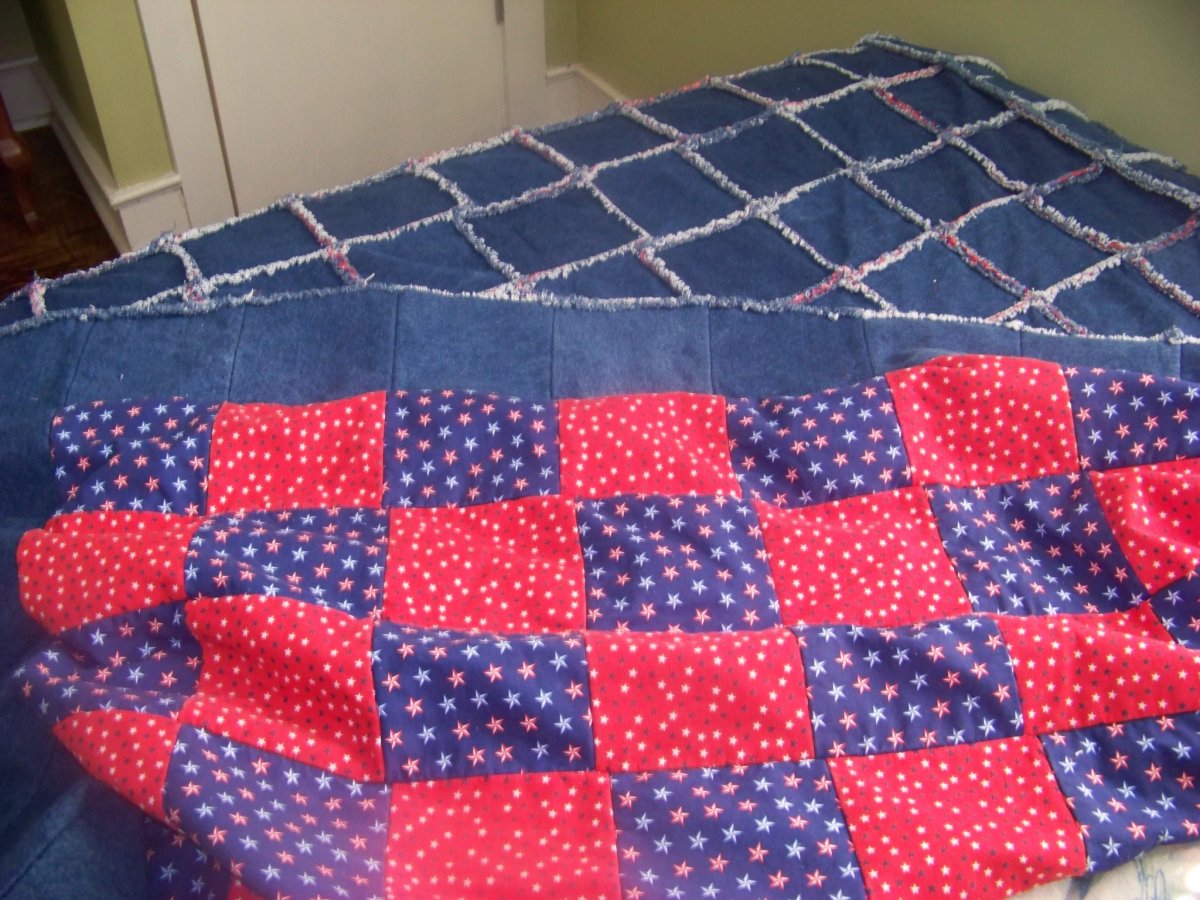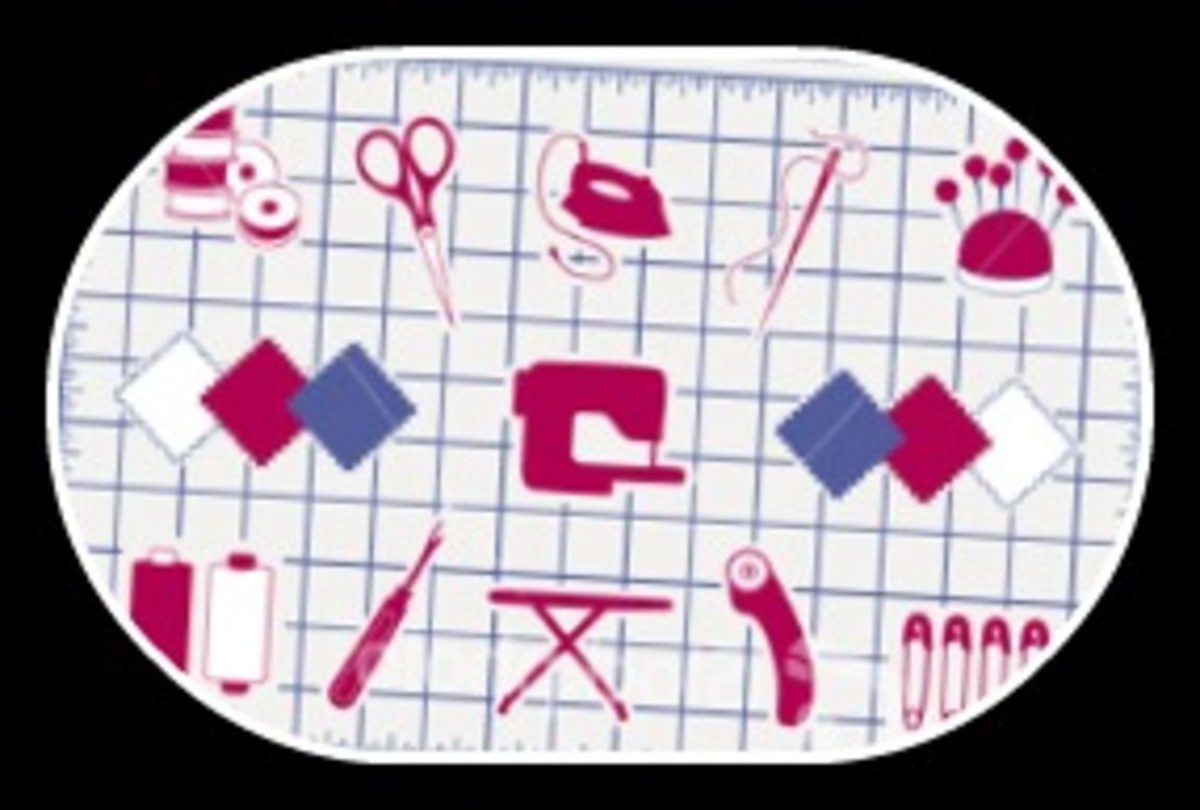Quilt Terms and Directions for anyone...
The term quilt is holding the blanket sandwich together....
You can make a quilt quick and easy by tieing a decorative yarn or thread through the quilt sandwich in either pattern, a systematic distance or randomly as long as the ties are close enough together to keep the quilt pieces together when they are washed. usually every 4 or 5 inches-dictated by design, necessity of your batting composition or just the look you want to achieve ..
**stitching around a design on a one piece quilt top that has a printed design that would look pretty with an imprint embedded by the quilting sewing stitch lines-could be a patchwork print look or flowers or modern graphic design....
*** or you could just quilt in a pretty design... spirals, circles, diagonal lines, random patterns...
the stitching over all three layers through all three layers is the quilting itself.
A tie quilt has
1. Top piece of material the size you want of your finished quilt minus the binding.
It can have squares or any shapes sewn together randomly-crazily-hence...crazyquilt--it can have borders... long strips between the sewn together pieces and the binding...a border can be any width... you can have a narrow 1/2 inch border then a 2 inch then a 4 inch then a 6 inch or just one 5 inch border. These become inner borders and the the last one is your outer border between your binding and the center quilt top. You can put little borders between your pieces you are sewing together and those are called sashings.... they are between piecing. All of these comprise a quilt top... It can be one piece it is still a quilt when you sew the three layers together.
2 A Piece of batting in between-usually the batting is bigger than the quilt top piece so you have some to put inside your binding. That is if you do not want your binding to fit over your quilt top piece and interrupt your design- or you can make your last pieces around the edge bigger to be able to hide their edge in the binding. So the size of your batting is determined by how you want your binding placed. Over your quilt top piece or to the edge. We will address the binding piece part choices in number 4.
3. The bottom or backing piece of your quilt can be pieced like the top, pieced like a bedspread in threes or you can buy qulit backing material that comes extra wide instead of 44 you can get 90", 102", 106", 111", 116". These backing cottons come in prints, batiks and all kinds of colors or tone on tones. They are not carried in large abundance as a lot of times people want to back their quilts in matching fabrics. Your backing piece will be the same size as the top if you are just place quilt binding over it... say a narrow 1 or 2 inch or or blanket binding width maybe 3 inches. You decide. You are the planner, designer, creator. It is your baby. Your binding can be very simply the backing made bigger than the quilt top and brought over turn the edge under and top stitch, hand stitch, or embroidery stitch along the edge. This is why you would have your batting say 2 inches bigger, then your backing 4.25 to 4.5 inches bigger. as you would fold it over the 2 inch batting and turn it under and then do your thing top stitch, hand stitch or embroidery. The turn under is determined by you.
4. The choices of your binding... You can make your binding as we said simply
A. bringing the backing over. OR...You can
B. cut strips twice the width of the binding you want plus turn under. For straight binding cut it so you can fold it in half and turn under the width you want so 2" binding would be 4.5 to get a 2 inch plus 1/4 inch turn under the edges.
C. Cut diagonal strips so that the material is on he bias or diagonal to your straight selvage.
The selvage is the uncut or unripped side that runs the length that is measured and sometimes has little holes in the margin where i was taken off the weaving machine. It is usually a smooth edge and sometimes is a slightly different color because of the different texture or it has a guide of dots or circles as to which colors match with the fabric.
D. Quilt binding also comes sold in pre packaged cellophanes.
YES YOU NEED A NICE IRON. Preferably Clean and steam and all fabric heat options and I prefer automatic turn off-so you don't get distracted.
Does the top have to be pieces?.... NO It can be just one big piece.
Does the inside have to be batting..? NO They didn't always have batting. In the old days it was layers of cotton inside or sometimes flannel. The batting or filler of whatever kind gives it insulation and sometimes texture. The batting is usually a lighter weight than if you used layers of other fabrics.
Why do people call some quilts cheaters quilts...? Because if you quilt around a design instead of piecing the top it is less work, or at least it with a design that looks like pieces of fabric sewn together but is really a pattern printed on the cotton.
Can you make a quilt out of anything other than cotton?
Yes. It can be anything. A lot of quilters want 100% cotton because it is traditional, and if you make the whole quilt, bottom, top and batting all cotton, you know they will all wash the same and have the same physical characteristics.
My first lapquilt article is using minkie (acrylic polyester washable no shrinking) with cotton. The cotton was pre washed to make sure it had shrunk and to have the color it would be after washing. Pre shrunk means that you put your fabric in the washer with warm water-soap not necessary for new fabric. Drying it on warm in the dryer will make sure it shrinks. We just don't want it to shrink afer we sew the fabric. It is always a good idea to wash fabrics in advance, to make sure that if there is any other fiber in the fabric- it does it all now. If something shrinks after it is sew/tacked tied or whatever.
What is a Quillow? A quillow is a quilt made with a pocket so you can fold it into a tosspillow.
It can be any size-the pillow just becomes bigger. The pocket is good to put your feet in.
finished quillow
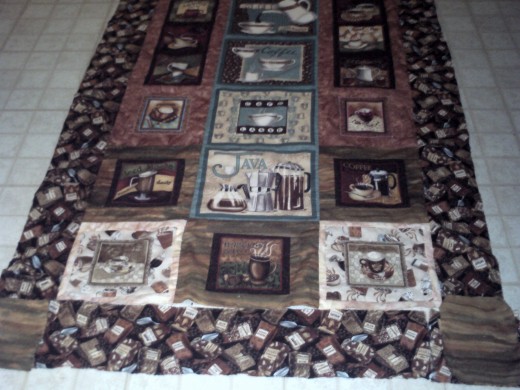
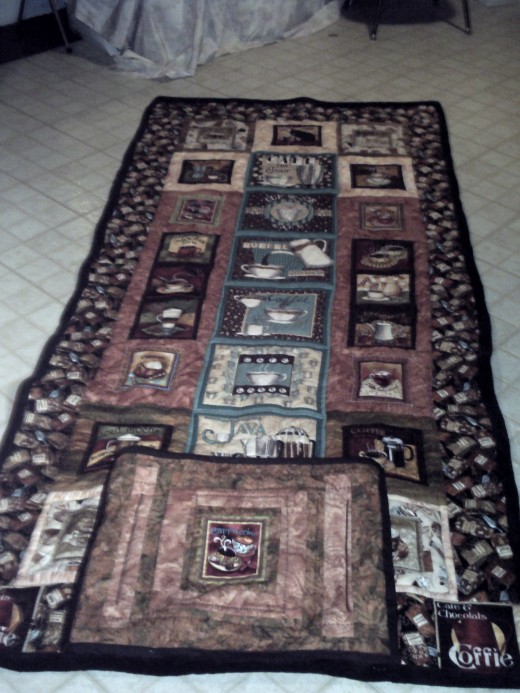
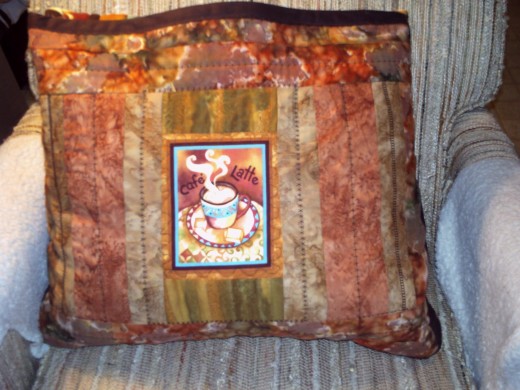
Layout Your Pieces When Doing Piecework
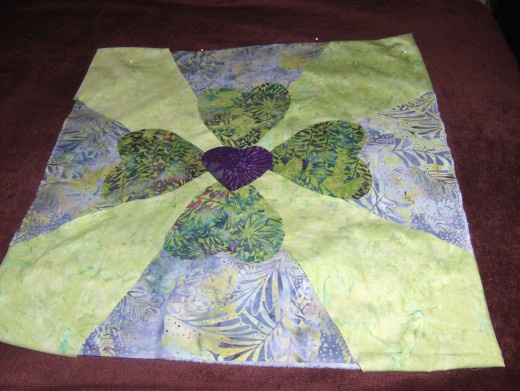
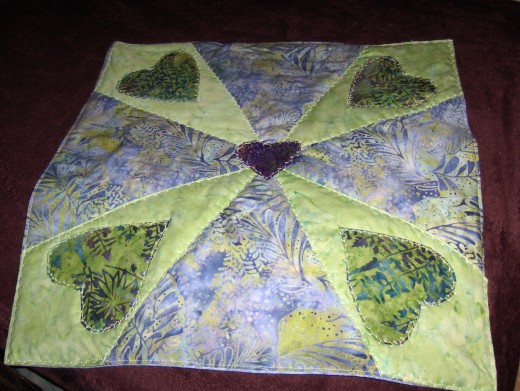
Planning your piecework
Many quilters make a flannel board. The flannel board is only a board with a big piece of flannel on it pulled around. Instead of a bulletin board it is a flannel board. You can lay your pieces on it and they stick to the flannel. You can lay them on the floor or a table. With the board you can put them up next to your sewing area and then stand back and see how it looks. Especially great if you are making a wall hanging quilt. You get to see what it really will look like hanging up. Angles make all the difference.
The pictures are a quilt block for a quillow pillowtop. I laid out the pieces and then I changed my mind. The second picture is the way I did it. I pieced appliqued and used an antique embroidery blanket stitch to outline and quilt the quillow. I will do an article on quillows. They are my favorite thing. Everyone should have two quillows at each end of their sofa or couch where they watch TV. Then when they get chilly they just open their quillow and snuggle in their quilt. The quilt folds into itself and becomes a pillow. You can make any size this is a 73 inch by 43 inch quillow when it was done.
I will write a full article on making quillow and figuring different sizes. Just follow me
Very Large Quilting Designs Can be Used
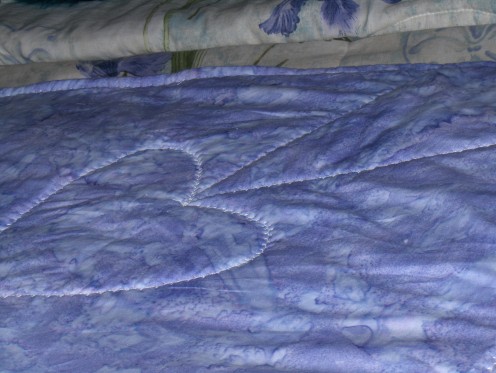
Reversible as a quilt
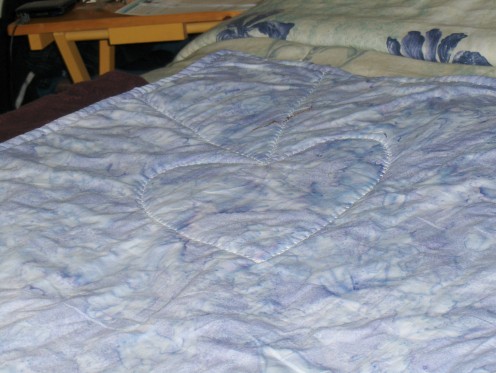
Finished quilt
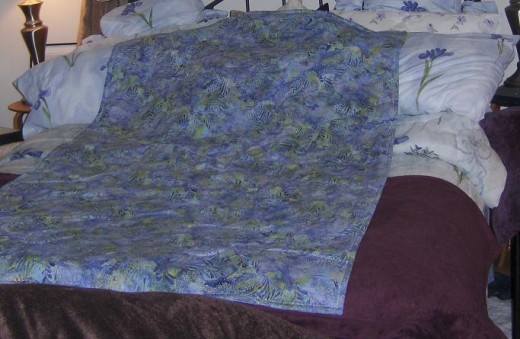
Wrong Side of Quillow with Pocket
